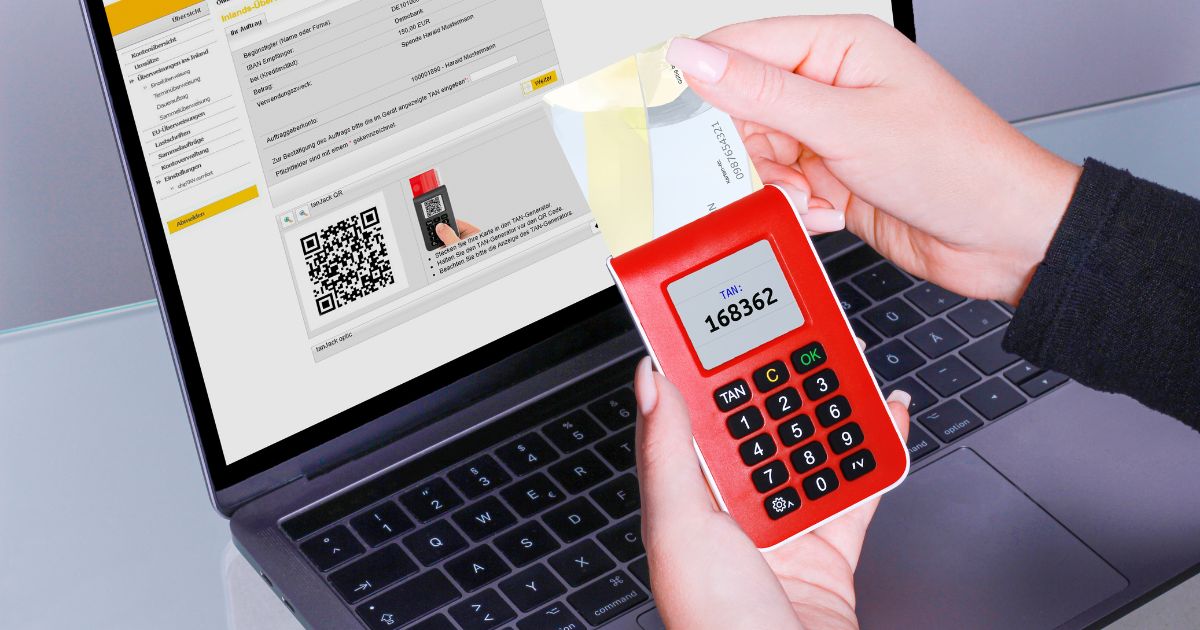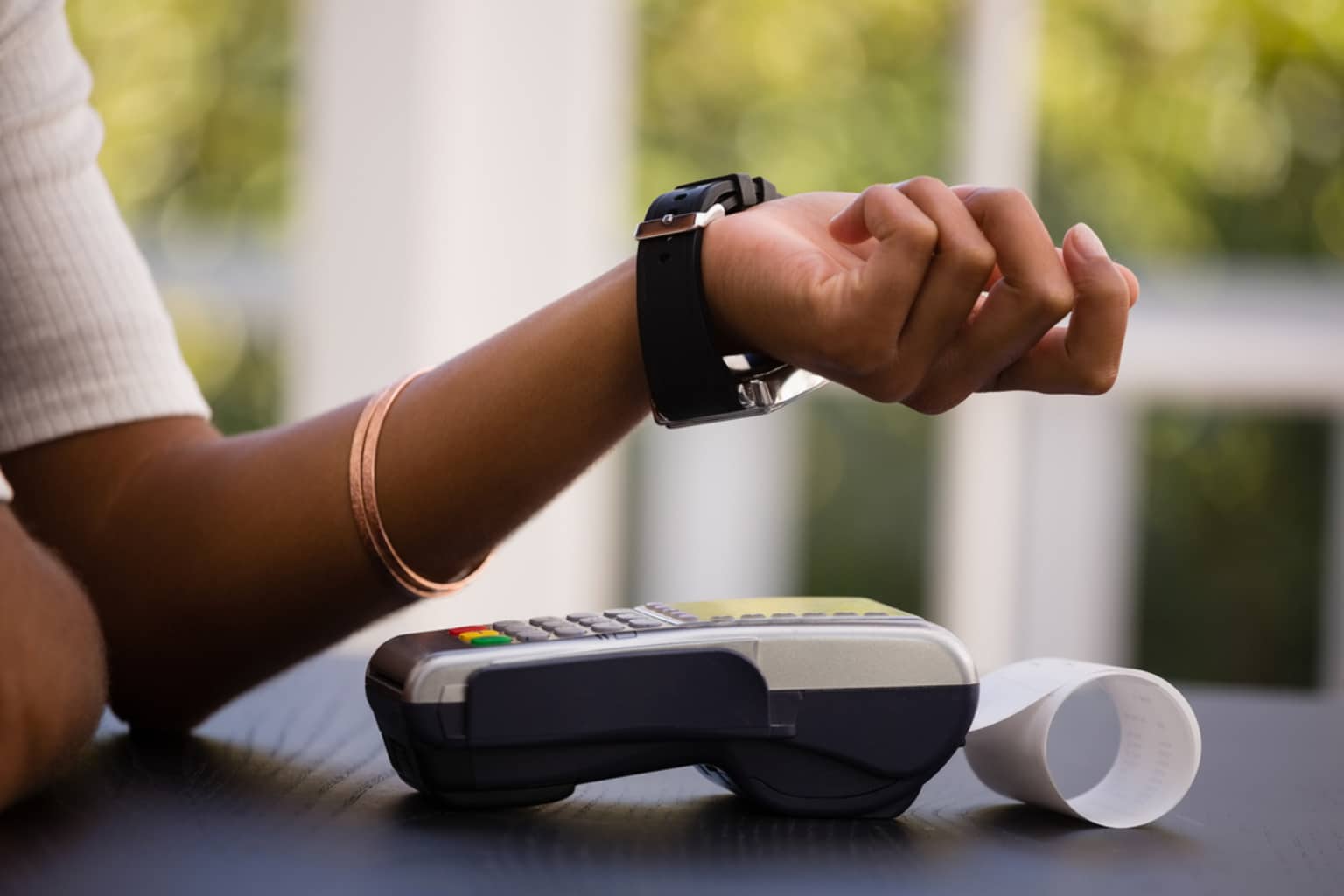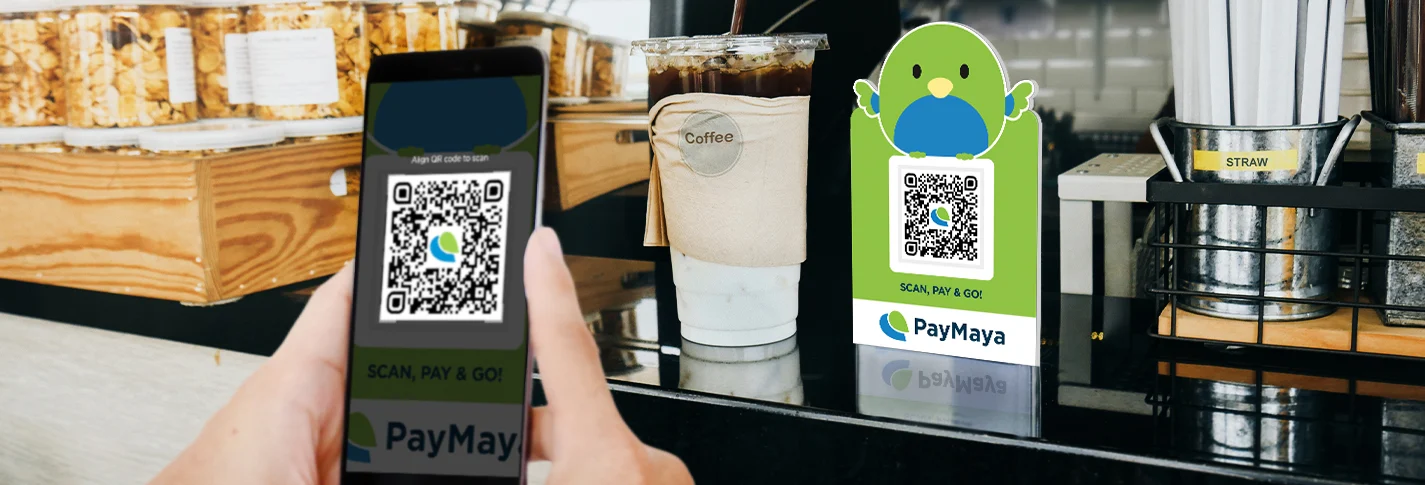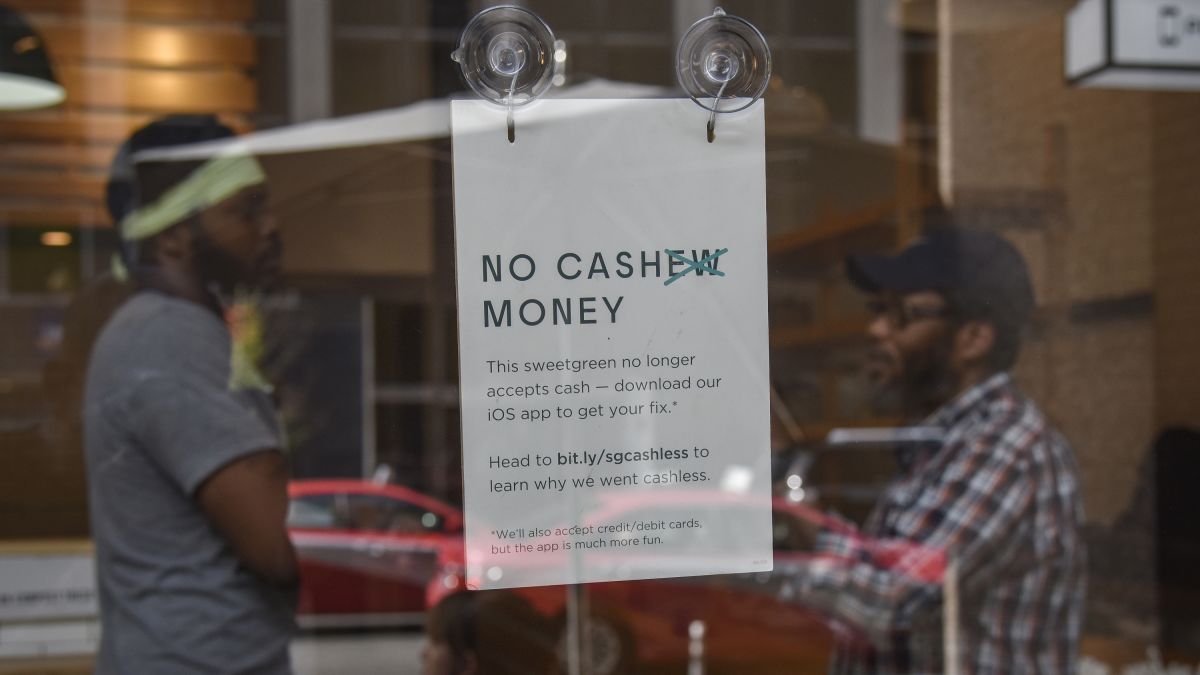Convenience
One of the main benefits of a cashless economy is the unparalleled convenience it offers to consumers. With cashless transactions, there is no need to carry around bulky wallets or worry about losing cash. Instead, individuals can simply use their smartphones, smartwatches, or contactless cards to make seamless payments.
Imagine being able to pay for your morning coffee by simply tapping your phone against a payment terminal. No fumbling for loose change or waiting for the cashier to count your bills. This level of convenience not only saves time but also eliminates the hassle of dealing with physical currency.
In addition, cashless transactions can be completed at any time and from anywhere. Whether you’re at a physical store, shopping online, or even transferring money to a friend, the convenience of cashless payments is unmatched. This accessibility allows for greater flexibility and freedom in managing your finances.
Furthermore, cashless transactions also enable quick and easy budget tracking. With the ability to view digital receipts and transaction history, individuals can monitor their spending habits, identify areas of improvement, and make more informed financial decisions. This level of visibility empowers individuals to take control of their finances and work towards their financial goals more effectively.
Moreover, a cashless economy streamlines the payment process for businesses as well. With cashless transactions, there is no need for manual cash handling, counting, or reconciling at the end of the day. This not only saves time but also reduces the risk of human errors and theft.
In summary, the convenience of cashless transactions provides a multitude of advantages for both consumers and businesses. From hassle-free payments to improved financial management, a cashless economy offers a level of convenience that simplifies and enhances the overall payment experience.
Increased Security
Another significant benefit of a cashless economy is the increased level of security it offers to both individuals and businesses. In a cashless system, there is no physical cash to be stolen, lost, or counterfeited, minimizing the risk of monetary theft.
With cashless transactions, personal information and financial data are securely encrypted and transmitted through advanced technologies. This makes it more difficult for hackers and criminals to access sensitive information and commit fraudulent activities.
Additionally, many cashless payment methods, such as credit cards and mobile wallets, provide additional layers of security through features like two-factor authentication and biometric verification. These measures add an extra level of protection, ensuring that only authorized users can access and use the payment accounts.
In the unfortunate event that a cashless transaction is compromised, individuals are usually protected by fraud liability protection provided by their financial institutions or payment service providers. This means that any unauthorized charges can be disputed and resolved much more easily compared to cash transactions.
Furthermore, in a cashless economy, there is a reduced risk of physical theft. Without the need to carry around large amounts of cash, individuals are less likely to become targets for theft or robbery. This creates a safer and more secure environment for conducting transactions.
For businesses, the increased security of cashless transactions also extends to the point of sale. Cashless payments eliminate the risk of counterfeit bills being unknowingly accepted, protecting businesses from financial losses. Additionally, with digital transactions, businesses can rely on secure payment processing platforms that offer robust fraud detection and prevention measures.
In summary, the shift towards a cashless economy brings about increased security for both individuals and businesses. From encryption and authentication technologies to fraud protection and reduced risk of physical theft, the security benefits of a cashless system contribute to a safer and more secure financial landscape.
Reduced Transaction Costs
A cashless economy presents the advantage of reduced transaction costs for both individuals and businesses. Compared to handling cash, digital transactions are often more cost-effective and efficient.
When using cash, there are several hidden costs involved. For individuals, these can include the time and effort spent on withdrawing cash, dealing with loose change, and potentially incurring fees for ATM withdrawals. In a cashless economy, these costs are essentially eliminated. With digital payments, individuals can conveniently make transactions without the need for physical cash, saving both time and money.
For businesses, cash transactions can result in various overhead expenses. These include the cost of cash handling, such as counting, storing, and transporting cash. In addition, businesses may need to invest in security measures to protect against theft or counterfeit currency. With cashless payments, these costs are significantly reduced, as businesses no longer need to handle physical cash or invest in expensive security measures related to cash management.
Moreover, cashless transactions offer the potential for streamlined accounting and record-keeping processes. Digital payments leave a digital trail, making it easier for businesses to track and reconcile transactions. This reduces the need for manual bookkeeping and minimizes the likelihood of errors. The streamlined accounting process can save businesses valuable time and resources, allowing them to focus on other critical aspects of their operations.
In addition to the direct cost savings, cashless transactions can also contribute to overall economic efficiency. Digital payments can speed up the payment process, reducing waiting times and increasing customer satisfaction. This efficiency can lead to increased productivity and economic growth.
Overall, the reduced transaction costs associated with a cashless economy benefit both individuals and businesses. By eliminating hidden costs, streamlining accounting processes, and enhancing economic efficiency, cashless transactions offer a more cost-effective and streamlined payment experience.
Better Tracking and Accountability
In a cashless economy, one of the significant advantages is the ability to track and account for every transaction. Digital payment methods leave a clear digital trail, providing individuals and businesses with a higher level of transparency and accountability.
For individuals, cashless transactions make it easier to track their spending habits and manage their personal finances. Digital receipts and transaction history can be accessed at any time, allowing individuals to monitor their expenses, categorize them, and gain insights into their spending patterns. This increased visibility helps individuals make informed financial decisions, set budgets, and save more effectively.
Furthermore, with digital transactions, it becomes effortless to reconcile financial records. Whether it’s for personal budgeting or tax purposes, the ability to easily track and account for every transaction simplifies the record-keeping process. This reduces the likelihood of errors and makes it easier to stay organized financially.
For businesses, the tracking and accountability benefits of a cashless economy are invaluable. Digital payment platforms provide real-time transaction data and analytics, enabling businesses to gain a deeper understanding of their customer’s purchasing behavior. This data can be used to refine marketing strategies, improve customer loyalty programs, and identify trends in consumer preferences.
Moreover, the transparency provided by digital transactions helps businesses combat fraudulent activities and financial discrepancies. With a clear digital trail, it becomes easier to identify any fraudulent transactions and take appropriate action. This level of accountability not only protects businesses from financial loss but also strengthens trust and confidence among customers.
Additionally, the ability to track and account for every transaction can contribute to more efficient inventory management. Businesses can analyze sales data to determine which products are selling well and adjust their inventory accordingly. This helps businesses optimize their stock levels, reduce waste, and improve overall operational efficiency.
In summary, a cashless economy offers better tracking and accountability for individuals and businesses. From tracking personal expenses to enhancing inventory management and combating fraud, the transparency and digital trail of cashless transactions promote a more accountable and efficient financial ecosystem.
Access for the Unbanked Population
A cashless economy has the potential to provide greater financial access and inclusion for the unbanked population, who have limited or no access to traditional banking services. By leveraging digital payment technologies, individuals who were previously excluded from the financial system can now participate and benefit from a wide range of financial services.
For the unbanked population, cashless payment methods offer a viable alternative to traditional banking. With the rise of mobile banking and digital wallets, individuals can create virtual accounts and conduct transactions using their smartphones or basic mobile devices. This allows them to securely store and transfer funds, make payments, and access other financial services.
Digital payment platforms also enable individuals without a formal bank account to receive payments electronically. For example, freelancers, small business owners, and gig economy workers, who may not have access to traditional merchant services, can utilize digital payment platforms to receive payments from clients and customers. This not only provides them with a convenient and secure way to receive funds but also helps them establish a financial identity and build a credit history.
Furthermore, cashless transactions can empower the unbanked population to save and manage their finances more effectively. Through digital wallets or mobile banking apps, individuals can set savings goals, automate savings contributions, and track their progress. This level of financial empowerment can contribute to enhanced financial well-being and the ability to plan for the future.
Additionally, the access afforded by cashless transactions can extend to financial education and literacy programs. With digital platforms, individuals can access educational resources, interactive tools, and financial management apps that can help them develop fundamental financial skills. This knowledge equips the unbanked population with the necessary tools to make informed financial decisions and improve their economic prospects.
While there are still challenges to overcome, such as ensuring affordability and accessibility of digital payment infrastructure, the potential for financial inclusion provided by a cashless economy is significant. By offering access to financial services, promoting financial literacy, and facilitating secure transactions, a cashless economy has the power to uplift and empower the unbanked population.
Greater Financial Inclusion
A cashless economy has the potential to foster greater financial inclusion by providing access to financial services for underserved individuals and marginalized communities. By reducing barriers and expanding the reach of financial services, a cashless system can bridge the gap between the financially excluded and the formal financial sector.
One of the main barriers to financial inclusion is the lack of access to banking services. Many individuals, especially in developing countries, do not have access to traditional banking infrastructure. However, with the advent of cashless transactions, individuals can utilize digital payment platforms, mobile wallets, and agent banking services to securely store, send, and receive funds without the need for a traditional bank account.
With the availability of digital payment methods, individuals who were previously excluded from formal financial services can now participate in the economy. They can access services such as digital lending, insurance, and savings products, which can help generate wealth, protect against risks, and promote economic stability.
In addition to expanding access, a cashless economy also enables individuals to build a financial identity. Historically, individuals without a bank account or credit history have faced challenges in obtaining loans or accessing financial products. But through digital transactions, individuals can establish a track record of financial behavior, which can be leveraged to access credit, secure loans, and engage in other financial transactions.
Greater financial inclusion also has the potential to empower women and marginalized communities. Cashless transactions provide an opportunity for them to gain control over their finances and participate more actively in economic activities. By providing access to financial services, including savings and credit facilities, a cashless economy can help break the cycle of poverty and promote gender equality.
Furthermore, a cashless economy encourages competition and innovation in the financial sector. It opens up opportunities for fintech companies and startups to develop and provide innovative solutions that cater to the needs of underserved populations. These solutions can range from digital microloans to tailored savings products, making financial services more accessible, affordable, and tailored to the unique circumstances of each individual.
In summary, a cashless economy has the potential to promote greater financial inclusion by expanding access to financial services, empowering marginalized communities, and fostering innovation. By breaking down barriers and bringing underserved individuals into the formal financial sector, a cashless economy can play a key role in reducing poverty, promoting economic development, and ensuring a more inclusive and equitable society.
Stimulated Economic Growth
A cashless economy can act as a catalyst for stimulating economic growth by streamlining transactions, enhancing efficiency, and promoting financial inclusion. The transition to cashless transactions can unlock numerous opportunities for businesses, entrepreneurs, and individuals, ultimately contributing to sustainable economic development.
One way a cashless economy stimulates economic growth is by reducing friction in transactions. Cash transactions often require physical exchange, counting, and change-making, which can be time-consuming and prone to errors. In contrast, digital payments allow for quick and seamless transactions, accelerating the pace of commerce. This efficiency translates into higher productivity, shorter queues, and more time for businesses to focus on core operations.
Cashless transactions also facilitate greater financial access for individuals and businesses. With digital payment options, businesses can attract a wider customer base, including those who prefer the convenience and security of cashless transactions. By expanding their customer reach, businesses can increase sales and revenue, leading to business growth and job creation.
Moreover, a cashless economy encourages innovation and entrepreneurship. Digital payment platforms and fintech solutions have the potential to level the playing field, allowing small businesses and startups to compete with larger, more established players. The ease of accepting digital payments can lower entry barriers, enabling aspiring entrepreneurs to bring their ideas to market more quickly and efficiently.
Furthermore, the data generated by cashless transactions can provide valuable insights for businesses and policymakers. Digital transactions leave a digital trail, which can be analyzed to identify market trends, customer preferences, and spending patterns. This data can inform businesses’ decision-making processes, enabling them to tailor their offerings, improve customer experiences, and make data-driven business decisions.
In addition, the increased financial inclusion facilitated by a cashless economy can lead to greater economic participation from marginalized communities. When individuals have access to digital payment options and financial services, they can engage in formal economic activities, invest in education and skills development, and contribute to economic growth. This inclusive growth benefits not only individuals but also the overall economy.
Lastly, a cashless economy has the potential to attract and retain foreign investments. Investors are often attracted to countries with efficient and secure payment systems that facilitate ease of doing business. By having a robust cashless infrastructure, a country can showcase its commitment to innovation and economic development, making it an attractive investment destination.
In summary, a cashless economy stimulates economic growth by streamlining transactions, promoting financial inclusion, fostering innovation, and attracting investments. The efficiency and convenience of digital payments contribute to increased productivity, entrepreneurship, and market insights, creating a favorable environment for sustainable economic development.
Environmental Benefits
One often overlooked advantage of a cashless economy is the positive impact it can have on the environment. By reducing the reliance on physical cash and promoting digital transactions, a cashless system can contribute to various environmental benefits, including decreased resource consumption, lower carbon emissions, and reduced waste.
Firstly, a cashless economy reduces the need for paper currency, resulting in significant resource conservation. The production of paper money requires the use of trees, water, and energy. By shifting towards digital payments, the demand for paper currency decreases, leading to a reduction in deforestation and water consumption. This conservation of resources helps to protect the environment, preserve natural habitats, and mitigate climate change.
Additionally, the transportation and distribution of physical cash contribute to carbon emissions. Transporting cash between banks, ATMs, and businesses requires vehicles that emit greenhouse gases. By transitioning to cashless transactions, the need for cash transportation is minimized, leading to a reduction in carbon emissions. This reduction in the carbon footprint can help mitigate climate change and improve air quality.
In a cashless economy, digital receipts and electronic statements replace paper receipts and financial statements. This reduction in paper waste helps to conserve trees and reduce the amount of waste sent to landfills. The production and disposal of paper contribute to deforestation and the emission of methane gas from decomposing paper in landfills. By going cashless, these environmental impacts can be significantly reduced.
Furthermore, a cashless economy promotes sustainable practices in various sectors. For example, in the retail industry, digital payments can encourage the adoption of electronic receipts and the use of sustainable materials in packaging. This shift towards more eco-friendly practices reduces waste generation and helps businesses become more environmentally conscious.
Finally, a cashless economy enables the adoption of green technologies. For instance, the use of mobile payment apps and contactless payments eliminates the need for paper receipts and plastic cards, reducing the use of materials derived from fossil fuels. Additionally, the advancement of digital banking and financial technologies can drive the development of renewable energy solutions, such as online solar energy credits or digital platforms for investing in clean energy projects.
In summary, a transition to a cashless economy offers significant environmental benefits. By reducing resource consumption, lowering carbon emissions, and decreasing waste generation, a cashless system contributes to a more sustainable and eco-friendly future. Embracing digital transactions and minimizing the reliance on physical cash can help preserve natural resources, protect ecosystems, and address environmental challenges.
Enhanced Data Insights for Businesses
A cashless economy provides businesses with enhanced data insights that can drive informed decision-making and enable more effective strategies. With digital transactions, businesses can collect and analyze valuable data regarding customer behavior, preferences, and market trends, leading to improved customer experiences and business performance.
One of the key advantages of a cashless economy is the availability of transaction data. Every digital payment leaves a digital trail that can be captured, stored, and analyzed. This data includes information such as purchase amounts, items, locations, and frequencies, providing businesses with a wealth of information about consumer behavior and preferences.
By harnessing the power of data analytics tools, businesses can gain valuable insights into customer preferences and tailor their offerings to better meet customer needs. They can identify popular products or services, understand buying patterns, and offer personalized recommendations. This level of customization can enhance customer satisfaction, foster loyalty, and drive repeat business.
Furthermore, data insights can help businesses optimize their operations and marketing strategies. By analyzing transaction data and customer demographics, businesses can identify target markets, refine pricing strategies, and allocate resources more efficiently. For instance, data may reveal peak shopping hours, enabling businesses to schedule staffing accordingly and optimize inventory levels to meet demand.
Data insights can also aid in fraud detection and prevention. With access to detailed transaction data, businesses can identify suspicious patterns or anomalies that may indicate fraudulent activity. This proactive approach can help businesses mitigate financial losses and protect both their customers and themselves from fraudulent practices.
In addition, data analysis can contribute to more effective marketing campaigns and customer engagement. By identifying customer preferences, businesses can create targeted marketing messages and personalized offers. This not only increases the chances of conversion but also enhances the overall customer experience. Businesses can also leverage data insights to refine their marketing strategies and identify new market opportunities.
Moreover, data insights can inform product and service development. By understanding customer buying habits and preferences, businesses can identify gaps in the market and develop innovative solutions. This customer-centric approach to product development increases the chances of success in the market and strengthens the competitive position of businesses.
In summary, a cashless economy provides businesses with enhanced data insights that can drive informed decision-making, optimize operations, and enhance customer experiences. By leveraging transaction data and embracing data analytics tools, businesses can gain valuable insights to refine their strategies, improve customer engagement, and maximize business performance.
Potential for Innovation in Payment Methods
A cashless economy paves the way for innovation in payment methods, opening up exciting possibilities for new and improved ways of conducting transactions. With the shift towards digital payments, businesses and individuals can explore and benefit from innovative payment solutions that offer convenience, security, and efficiency.
One area of innovation is the rise of mobile payment apps and digital wallets. These applications allow users to securely store their payment information on their smartphones and make contactless payments with just a few taps. Mobile payment apps offer convenience and ease of use, eliminating the need for physical payment cards or cash. They often come with additional features such as loyalty programs, rewards, and peer-to-peer payment capabilities.
Furthermore, wearable technology is another avenue for innovation in payment methods. Devices like smartwatches and wristbands equipped with Near Field Communication (NFC) technology can enable contactless payments. This convenience allows individuals to make payments effortlessly and securely, simply by tapping their wearable device on a payment terminal.
Biometric payment methods, such as fingerprint or facial recognition, are gaining popularity as a secure and convenient way to authenticate individuals for transactions. These innovations provide an extra layer of security by tying payment information to a unique biological marker, reducing the risk of unauthorized access and fraud.
In addition, blockchain technology, which forms the basis of cryptocurrencies like Bitcoin, has the potential to revolutionize payment methods. Blockchain enables secure and decentralized transactions, eliminating the need for intermediaries and reducing transaction fees. The immutability and transparency of blockchain transactions provide an added layer of trust and security.
Furthermore, application programming interfaces (APIs) have opened up possibilities for businesses to integrate payment functionalities seamlessly into their websites and applications. By leveraging APIs, businesses can create a unified and streamlined payment experience for their customers, ensuring a smooth transaction process.
The potential for innovation in payment methods extends beyond these examples, with ongoing research and development continually pushing the boundaries. Concepts such as voice-activated payments, Internet of Things (IoT) connected devices for transactions, and even cryptocurrency adoption by mainstream businesses are being explored and implemented.
By embracing and driving innovation in payment methods, businesses can differentiate themselves, attract new customers, and improve customer satisfaction. Additionally, innovative payment solutions enhance operational efficiency, reduce costs, and contribute to a smoother and more seamless transaction experience for both businesses and consumers.
In summary, a cashless economy fuels innovation in payment methods, providing opportunities for businesses and individuals to explore and benefit from convenient, secure, and efficient transaction solutions. From mobile payment apps and wearables to biometric authentication and blockchain technology, the potential for innovation is vast, promising a future where financial transactions are seamlessly integrated into the digital landscape.

























